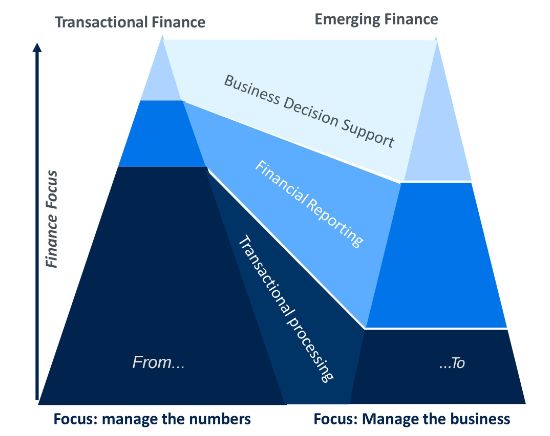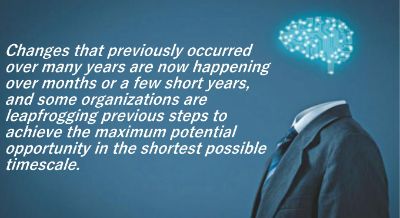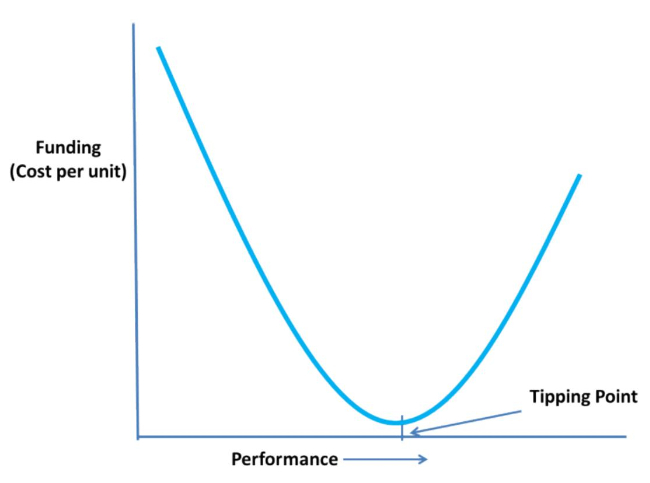
Would you like to start a conversation with other industry leaders to brainstorm a challenge or to just know more on a particular topic?
Engage in online discussions with your Peers
Start NowMy son is a 14-year-old, studying in 10th standard in school. He is due to select his elective subjects as he graduates to 11th in few months from now. Every time I bring up the topic of selecting his electives, he runs away from the room shrugging his shoulders. I was wondering why he is behaving the way he is until I found an answer. He has not set up a personal North Star for himself!
I would like to define a personal North Star as a goal or an ambition that we set for ourselves.
As for individuals, companies, functions and departments too can setup their own corporate, departmental or functional North Stars. Unlike Polaris, our celestial North Star, which is constant for all Earthlings, our personal or functional North Stars can be private to each. Fortunately, the path to our own North Stars can conveniently be broken into short term, medium term and long-term milestones.
North Star is a Key to Setting-up a Shared Services Organization (SSO)
Most of the organizations' efforts to setup effective SSOs fail because they do not pay enough focus on their North Star. Not that they don’t intend to, however there is an ocean of difference between strategy (setting up North Star) and execution (reaching for it). What is defined in the strategy document does not see the light of the day. This can be for multiple reasons:
- Employee churn.
The key people who were involved in setting up the North Star are no more in the same role or have left the company. - Unrealistic or vague targets.
Targets were set at very high levels or targets not properly defined at department/ function level. - Random evolution.
Service centers evolve randomly or haphazardly, as convenient – as opposed to a proper and scientific design. - Leadership competency.
Designing and running an SSO requires a specific skillset. A mismanagement of this important feature can ruin even a well-laid out plan.
Ensuring good stakeholder management, forming an efficient operating team, creating a learning and customer-oriented service organization, use of modern technological tools, and a stellar focus on the North Start can achieve enormous benefits through lean and efficient working.
Below is an example of changes that can be brought about in Finance delivery through strategic use of its SSO:

Factors in Setting-up an SSO
Understand the larger picture. While the SSO strategy may be put into shape, its best to be mindful of the fact that this may not be the only transformation that is taking place in the organization. The SSO strategy must integrally gel with the overall transformation agenda of the organization.
Set a realistic business case. Transformational business cases are often created with support of external consultants who may or may not know the dynamics of the organization. Validation of the benefit case through a microscope is often turned out to be prudent. Business case oversimplification is a common pitfall.
Repeatedly validate assumptions. Business cases are prepared based on certain assumptions. In this rapidly changing world these assumptions may not hold valid for long durations. Assumptions get impacted often even from external forces where we may not have control.
Repeatedly validate assumptions. Business cases are prepared based on certain assumptions. In this rapidly changing world these assumptions may not hold valid for long durations. Assumptions get impacted often even from external forces where we may not have control.

Harvest the low hanging fruit first. This may include the simple transformation initiatives as well as organization restructuring by releasing, realigning or absorbing employees from within or outside the function. This will often be the initial benefits from the larger transformation initiative.
Stay focused and watch the pulse. Benefits are never self-realized. They need to be tracked to ensure they are delivered. Tracking of benefits gets diluted over a period and hence taper the benefits realized.
Find the Tipping Point
First defining and then tracking the Key Performance Indicators (KPIs) for processes, people and costs are unarguably the fundamental drivers for success.
This is usually called out in the stakeholder agreement on process performance and costs (i.e. funding). These are essentially the building blocks of any SSO. A fine balance needs to be created between process performance and funding. An increase in process performance beyond a point may have an impact on funding. On the flip side, cost of poor quality may also have a significant impact on funding.
There is a common ligature between process performance and funding which needs to be sensitively nurtured in order to manage the tipping point between cost of poor quality and process performance beyond the need (e.g. If a ‘good enough’ 98% accuracy is agreed, maintaining a 99+% accuracy by putting additional quality checks may be unwarranted and possibly expensive). This ligature between process performance and funding is people. It is the people who make or break it.
Hence monitoring the staff performance (through a well laid performance measurement system) could well bring out a paramount indicator or early warning signal before reaching the tipping off point.
While it is best to identify poor performance early and put in rectification measures, at the same time, it may be a waste to have all team members to be above average performers as there is a cost of maintaining very high standards.

The SSO leadership team holds the primary responsibility in managing the tipping point by establishing the right enablers at the right level of maturity. They are charged to ultimately create the capability to do “more with less” and shift capacity from transactions to innovation and growth.
Snowball Effect
Avoiding confrontation is an art. Experience advocates that combat does not do any good to anybody. Withdrawing from a situation often gives a chance to think through and respond. A small unfitting reaction has the potential of causing a snowball effect.
Bad communication creates a snowball effect that can bring down the energy and morale of the entire organization. Tackling a snowball consumes a lot of effort and falls squarely in the ‘non-value-added’ segment of work.

If things get tough – seek help.
Sometimes what seems logical may not be practical, as we may have a limited visibility of what’s cooking for the rest of the party. Involving people with larger circle of influence is often wiser rather than dealing with the situation alone. It is prudent to seek out stakeholders who might have a ‘elephant foot’ in the organization.
Look out for the incident avalanche.
Often people become defensive with the SSO strategy and its promised results. These situations could arise when people are blind sighted by rhetoric and fail to analysis data. Keeping accurate records, carrying out scientific analysis and creating actionable business reports could well be the salvation to this problem.
Politics is inevitable.
Setting up an SSO may not be everyone’s agenda. People may have vested interest and may act as disrupters. This is usually when their own positions, reputations or jobs are at risk. At times like this it may be best to stay calm, away from all politics and not resort to counter politics.
North Star is the Only Guide
The end justifies the means.
A judicious and laser focus on the North Star helps the first-time traveler not wander around in circles and achieve the goal. A large part of success of an SSO could well be that laser focus of the leadership team.
An out-of-focus or half-hearted leadership could lead to a dementing impact in its otherwise lustrous destiny.
ABOUT THE AUTHOR

Deepak Kumbhat is a business leader with 20 years of experience. He has a collaborative approach to successful transformational leadership, engaging with business stakeholders at C-level and 3rdparties, delivering ‘fit for purpose’ solutions, complex programs and business change.
Deepak has been significantly driving change management, business transformation, building and leading service delivery for third party and shared service operations, project strategies, redefined operating models, organizational design and business benefits realization.




